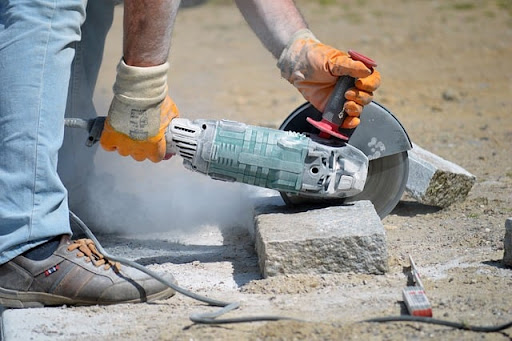Contracting has come a long way from manual labor and rudimentary tools. Today, it is a highly sophisticated industry that relies on cutting-edge technology to streamline processes, enhance efficiency, and bring dreams to life. This article explores six tools that redefine contracting and revolutionize how projects are planned, executed, and completed. These tools make the lives of contractors easier and pave the way for innovative and sustainable construction practices.
Power Tools
These days, using power tools has become synonymous with modern contracting. Power tools are essential for various construction tasks, from drilling and cutting to fastening and finishing. The evolution of power tools has increased the efficiency of construction work and made it safer and less physically demanding for workers. According to the concrete prep and polishing products providers behind DiamaPro, selecting the right power tools can significantly impact the quality of concrete preparation and finishing work. For instance, concrete grinding and polishing machines have become indispensable for achieving smooth, durable, and aesthetically pleasing concrete surfaces in concrete and flooring contracting. These machines use diamond abrasive discs to grind down and polish concrete floors to the desired level of smoothness and shine.
Drones
Drones have taken the construction industry by storm. These small, unmanned aircraft have become invaluable tools for contractors, providing a bird’s-eye view of construction sites and capturing high-resolution images and videos. Drones can be equipped with cameras, LiDAR sensors, and thermal imaging technology, allowing contractors to gather a wealth of data and insights. One of the most significant advantages of using drones in contracting is their ability to conduct site surveys quickly and accurately. Traditional surveying methods can be time-consuming and costly, but drones can cover large areas in a fraction of the time. This data can be used for site analysis, progress monitoring, and quality control.
Building Information Modeling (BIM)
Building Information Modeling (BIM) has been a game-changer in the construction industry. It is a digital representation of a building’s physical and functional characteristics, allowing contractors to visualize the entire project in a virtual environment before construction begins. BIM goes beyond traditional 2D drawings by creating a 3D model that includes all the necessary data and information about materials, costs, and schedules.
One of the primary advantages of BIM is its ability to improve collaboration among project stakeholders. Everyone can work together in real time, making changes and adjustments to the design as needed. This collaborative approach minimizes errors, reduces rework, and enhances overall project efficiency. Furthermore, BIM enables contractors to simulate construction processes, helping them identify potential issues and conflicts before they occur on the construction site. This saves time and money and ensures a safer working environment for construction workers.
Directional Drilling Fluids
During and following a drilling operation, directional drilling fluids play a critical role in ensuring that the hole remains stable. Water, bentonite, soda ash, and chemical additives are common ingredients in drilling fluids. The geological conditions and the qualities of the water and other fluids used in the boring process must be considered when selecting the drilling fluid.
The geological features of the area determine the drilling fluid. To stabilize the bore and remove cuttings, drill fluid is utilized in coarse-grained soils like sand and gravel. As in sandy soils, drilling fluid serves the same purpose in clay, but it must also keep the soil from expanding. In addition to bentonite, the drilling fluid must now contain additional chemical additives.
3D Printing
3D printing can revolutionize the construction industry. This technology allows contractors to create intricate building components and structures layer by layer using materials such as concrete, plastics, and metals. 3D printing offers several advantages: speed, cost-effectiveness, and design flexibility. One of the most significant benefits of 3D printing in construction is its ability to reduce construction time. Traditional methods of constructing complex architectural elements can be time-consuming and labor-intensive. With 3D printing, these elements can be produced faster and more precisely. This can lead to significant cost savings and faster project completion.
Augmented Reality (AR)
Augmented Reality (AR) is another tool transforming the contracting industry. AR technology overlays digital information and 3D models onto the real world, providing contractors with a more immersive and interactive experience. Contractors can use AR headsets or mobile devices to visualize a project’s look once completed and identify potential issues in real time.
One of the significant benefits of AR in contracting is its ability to improve communication and decision-making on the construction site. Contractors can use AR to superimpose design plans onto the site, making it easier for workers to follow instructions and stay on track. This reduces errors and minimizes rework, ultimately saving time and money. AR also plays a crucial role in training and onboarding new construction workers. Contractors can use AR simulations to train workers on equipment operation, safety procedures, and construction processes. This ensures that workers are well-prepared for their tasks and can perform them safely and efficiently.
Construction Management Software
Construction management software has become a cornerstone of modern contracting. These software solutions are designed to streamline project management, scheduling, budgeting, and communication. They provide a centralized platform where team members can store and access all project-related data and documents in real-time. Construction management software can improve project transparency and collaboration. Contractors can track project progress, manage schedules, and monitor budgets more effectively. Additionally, these tools facilitate communication between project stakeholders, ensuring everyone is on the same page.

Contracting has evolved significantly in recent years thanks to the adoption of innovative tools and technologies. The contracting industry will undoubtedly grow as technology advances, bringing even more exciting innovations. Contractors who embrace these technologies and adapt to the industry’s changing landscape will be well-positioned to deliver projects more efficiently, cost-effectively, and sustainably, turning dreams into reality one construction project at a time.

